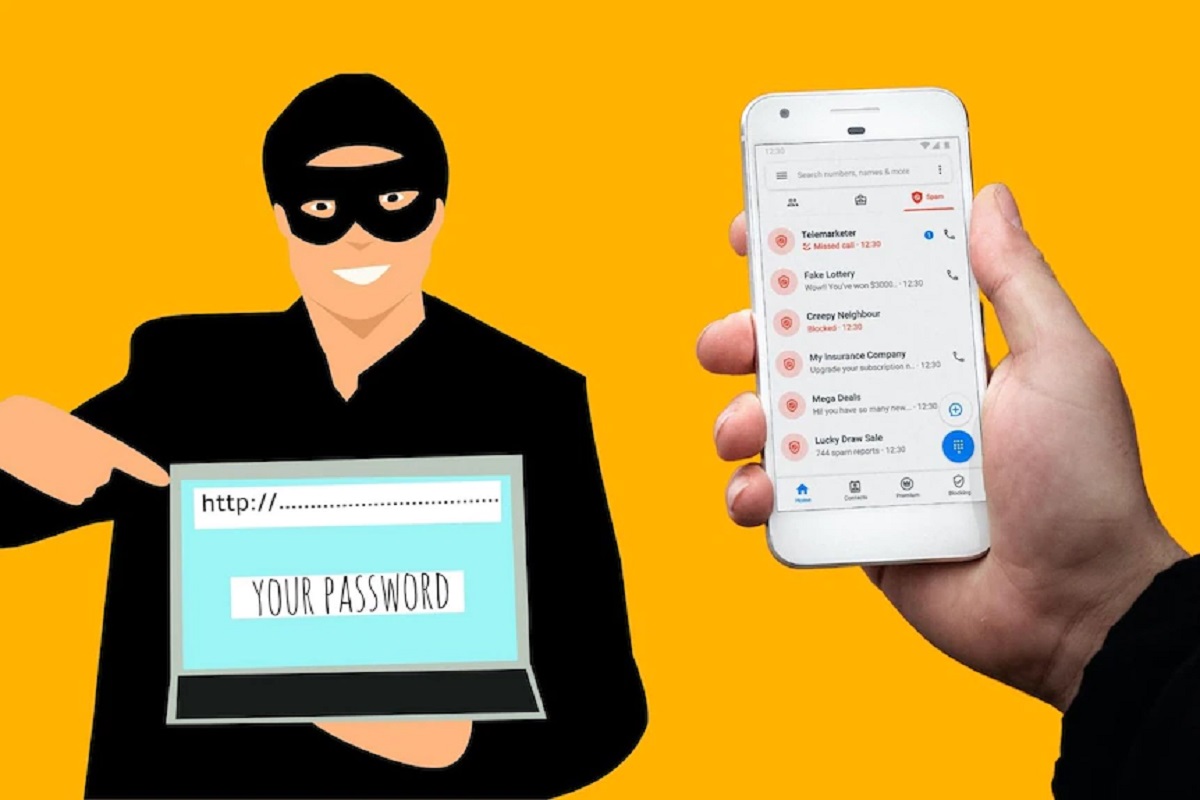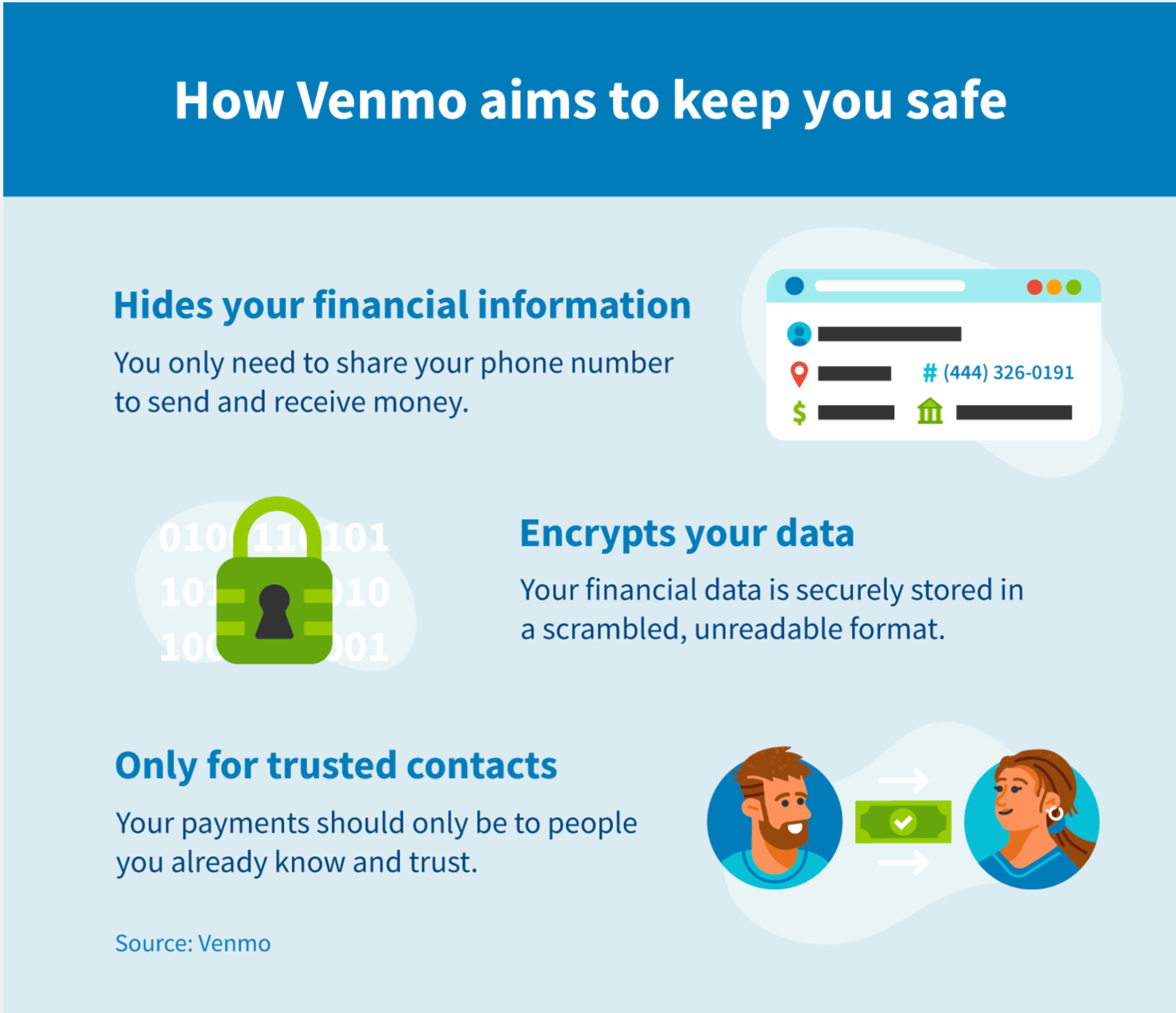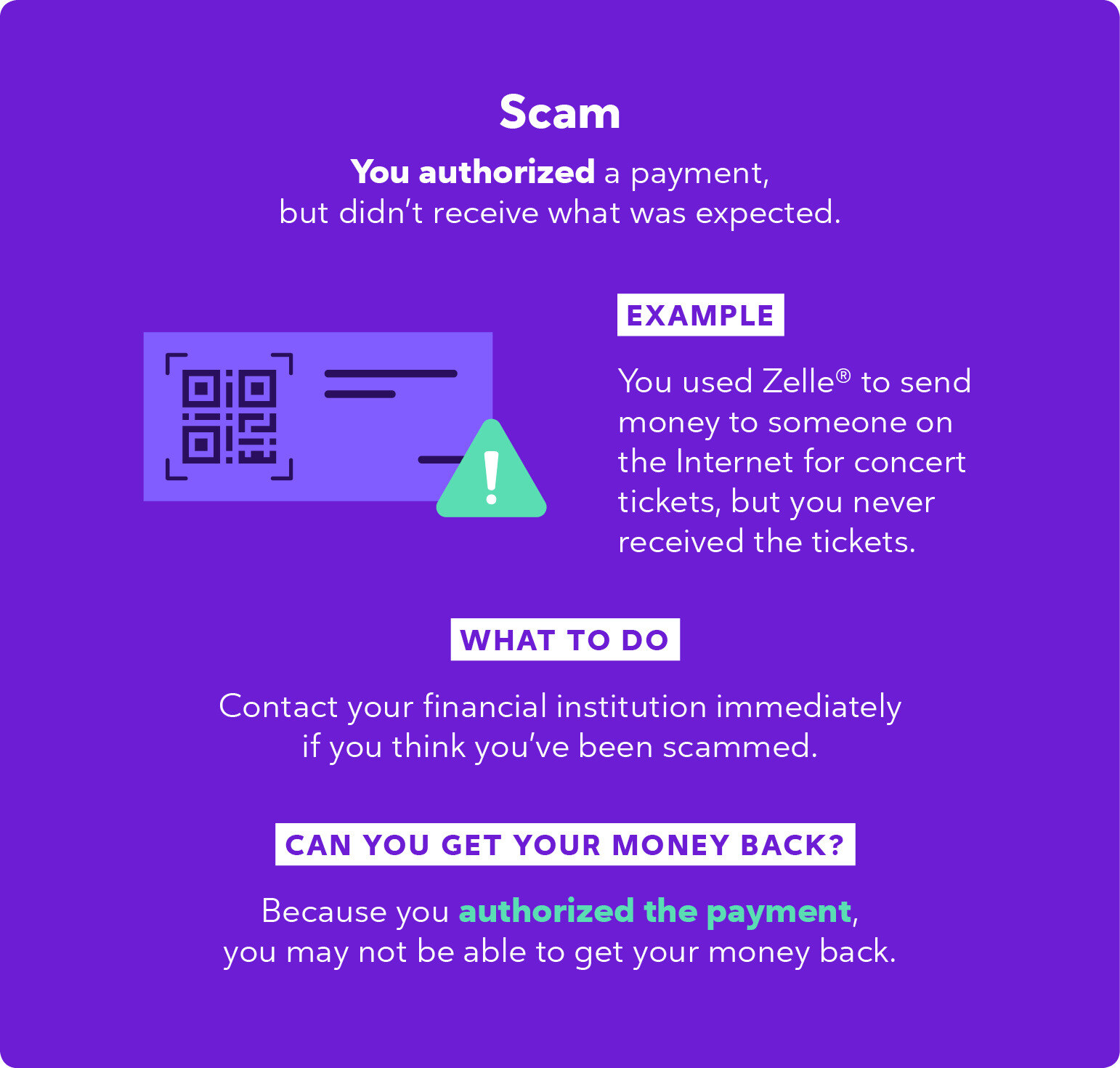Introduction
Facebook Pay has become a popular method for online transactions, allowing users to securely send and receive money through the social media platform. However, this convenience has also led to an increase in Facebook Pay scams, where scammers attempt to trick unsuspecting users into sending them money or sharing sensitive personal information.
These scammers can be incredibly convincing, using various tactics such as posing as friends, family members, or even official Facebook representatives. They prey on users’ trust and use manipulative techniques to deceive them into thinking they are conducting a legitimate transaction.
It is important to be aware of the signs of a Facebook Pay scam and know how to protect yourself from falling victim to these fraudulent activities. In this article, we will explore the methods scammers use and provide you with tips on how to spot and report Facebook Pay scammers.
By familiarizing yourself with the tactics scammers employ and learning how to identify them, you can better safeguard your personal information and financial well-being while using Facebook Pay.
What is Facebook Pay?
Facebook Pay is a digital payment system developed by Facebook, allowing users to send and receive money securely within the Facebook platform. It provides a convenient and seamless way for individuals to make online transactions, whether they are splitting expenses with friends, purchasing products from businesses, or donating to charitable causes.
With Facebook Pay, users can link their preferred payment methods, such as credit or debit cards, PayPal, or their bank accounts, to their Facebook account. This allows them to make payments directly through the platform without the need to enter their payment information each time.
Facebook Pay is available on various Facebook-owned platforms, including Facebook Messenger, Instagram, and WhatsApp. This means that users can send and receive money not only within Facebook itself, but also across these popular messaging apps.
One of the key features of Facebook Pay is its commitment to security. Facebook utilizes advanced encryption and secure payment technology to protect users’ financial information and transactions. This includes features like secure account verification and the ability to set up a personal identification number (PIN) for added protection.
In addition to person-to-person transactions, Facebook Pay also enables users to make purchases from businesses directly through the platform. This functionality is particularly useful for small businesses and entrepreneurs who can now leverage Facebook’s vast user base to sell products and receive payments seamlessly.
It is important to note that Facebook Pay is not available in all countries at the moment. Before using Facebook Pay, users should check if it is available in their respective regions and ensure that they comply with the payment service’s terms and conditions.
Overall, Facebook Pay provides a convenient and secure way for users to send and receive money within the Facebook ecosystem. It enhances the user experience by simplifying transactions and expands the possibilities for individuals and businesses to connect and engage with each other financially.
How do Facebook Pay scammers operate?
Facebook Pay scammers are sophisticated individuals who employ various tactics to trick users into sending them money or providing personal information. Understanding how these scammers operate is crucial to protect yourself from falling victim to their schemes. Here are some common methods used by Facebook Pay scammers:
Impersonating trusted individuals: Scammers often pose as friends, family members, or acquaintances. They may create fake profiles or hack into existing accounts to send messages requesting money. By impersonating someone you trust, they exploit the emotional connection to manipulate you into believing their story.
Creating urgency: Facebook Pay scammers often create a sense of urgency to pressure their targets into acting quickly. They may claim there is an emergency situation or a limited-time offer that requires immediate payment. This tactic is designed to prevent users from taking the time to think critically about the legitimacy of the transaction.
Spoofing official organizations: Some scammers go to great lengths to appear as representatives of official organizations, such as Facebook or law enforcement agencies. They may use logos, official wording, or even fake email addresses to trick users into believing they are dealing with a legitimate entity. These scams often involve claims of account verification or winning a prize that requires payment to process.
Employing emotional manipulation: Scammers may exploit users’ emotions to gain their trust and sympathy. They might make up stories about being in a desperate situation, suffering from illness, or facing financial hardship. Their goal is to evoke an emotional response that lowers the user’s guard and makes them more susceptible to parting with their money.
Using phishing techniques: Phishing is a common method scammers use to trick users into revealing their personal information, such as login credentials or credit card details. Scammers may send links to fake websites that mimic the official Facebook Pay login page or ask users to provide their payment information through a malicious form. These tactics allow scammers to gain access to users’ accounts or steal their financial information.
Exploiting ignorance or confusion: Facebook Pay scammers often target users who are unfamiliar with the platform’s features or who may be confused about how certain transactions work. They take advantage of this lack of knowledge by providing misleading information or confusing instructions, leading users to unknowingly fall into their trap.
It is important to remain vigilant and skeptical when engaging in financial transactions on Facebook Pay. By being aware of the tactics used by scammers, you can better protect yourself from falling victim to their schemes.
Signs of a Facebook Pay scam
Identifying the signs of a Facebook Pay scam is crucial to protect yourself from falling victim to fraud. By staying alert and recognizing these warning signs, you can avoid financial loss and potential harm. Here are some common signs that indicate you may be dealing with a Facebook Pay scam:
Unsolicited requests for money: If you receive a message from someone you don’t know or haven’t had previous interactions with, requesting money through Facebook Pay, be cautious. Scammers often target individuals who are more likely to trust strangers, so always verify the person’s identity and their reasons for requesting money.
Pressure to act quickly: Scammers use urgency as a tactic to prevent users from questioning the legitimacy of the transaction. If you receive a message that requires immediate payment or threatens dire consequences if you don’t act fast, it may be a red flag. Take your time to evaluate the situation and consider the legitimacy of the request.
Requests for personal or financial information: Be wary of requests for sensitive information such as your Social Security number, bank account details, or credit card information. Legitimate transactions on Facebook Pay should not require you to provide this information. If you are unsure, always double-check with the official sources or the party involved through a separate, trusted communication channel.
Spelling and grammar mistakes: Many scammers operate from regions where English may not be their first language. As a result, their messages often contain noticeable spelling and grammar errors. While everyone is susceptible to making mistakes, consistent errors throughout the conversation may indicate a scam.
Unverified or suspicious profiles: Scammers often use fake or stolen profiles to conduct their scams. Check the person’s profile for signs of authenticity, such as a low number of friends, lack of personal information, or inconsistencies in their photos or posts. Feel free to reach out to mutual connections to verify the person’s identity before engaging in any transaction.
Requests for payment through unconventional methods: Scammers may ask for payment through unconventional methods, such as wire transfers, prepaid debit cards, or cryptocurrency. These methods offer little to no protection or recourse for recovering funds in case of a scam. Be cautious if someone insists on using these methods instead of more secure payment options.
Offers that seem too good to be true: Scammers often lure users with enticing offers that seem too good to pass up. Whether it’s a ridiculously low price for a high-value item or an overly generous return on investment, be skeptical. If an offer seems too good to be true, it likely is.
Lack of transparency or evasiveness: If the person requesting payment through Facebook Pay is evasive or unwilling to provide clear, verifiable information about themselves or the transaction, exercise caution. Legitimate individuals and businesses are usually transparent and open to answering questions.
If you encounter any of these signs, it is crucial to trust your instincts and proceed with caution. Taking the time to verify the legitimacy of a transaction or reaching out to official channels for confirmation can help protect yourself from Facebook Pay scams.
How to report a Facebook Pay scam
If you suspect that you have encountered a Facebook Pay scam, it is important to report it to the appropriate channels. By reporting the scam, you not only protect yourself but also help prevent others from falling victim to fraudulent activities. Here are the steps to report a Facebook Pay scam:
Step 1: Stop all communication: If you realize that you are dealing with a scammer, immediately cease all communication with them. Do not respond to their messages or provide them with any further information.
Step 2: Take screenshots: Preserve evidence of the scam by taking screenshots of all relevant conversations, including messages, profiles, and any other information that may be useful for the investigation. These screenshots will serve as proof of the scam and can be provided when reporting the incident.
Step 3: Report the scam to Facebook: Facebook provides an option to report scams and fraudulent activity through their platform. Go to the profile of the scammer and click on the “…” (More) button, then select “Report” and follow the prompts to report the individual as a scammer.
Step 4: Use the Facebook Help Center: Visit the Facebook Help Center and search for information on how to report scams specifically related to Facebook Pay. The Help Center provides detailed instructions and resources to guide you through the reporting process.
Step 5: Contact your local law enforcement agency: In cases where you have suffered financial loss or believe you may be in immediate danger, it is important to contact your local law enforcement agency. Provide them with all the relevant information and evidence you have gathered to aid in their investigation.
Step 6: Warn others: Share your experience and raise awareness about the Facebook Pay scam by informing your friends, family, and social media connections. By spreading the word, you can help others recognize and avoid falling victim to similar scams.
Step 7: Monitor your accounts: It is important to keep a close eye on your financial accounts and report any suspicious activity to your bank or credit card company. Regularly monitor your transactions and change your passwords as an additional precautionary measure.
Reporting Facebook Pay scams is crucial not only for your own protection but also for the safety of other users. By taking these steps, you contribute to the efforts of keeping the Facebook community safe and secure.
Steps to find a Facebook Pay scammer
If you have fallen victim to a Facebook Pay scam or suspect that you are dealing with a scammer, it is important to take action to identify the individual responsible. By gathering information and following the appropriate steps, you can help in the pursuit of justice and prevent others from becoming victims. Here are the steps to find a Facebook Pay scammer:
Step 1: Research the scammer’s profile: Start by gathering information about the scammer’s profile. Look for any details provided, such as their name, profile picture, location, or any other personal information they may have disclosed. Record this information for further investigation.
Step 2: Analyze the scammer’s communication patterns: Review the conversations you have had with the scammer. Analyze their language, grammar, and any unique phrases they may have used. Pay attention to the time of their responses, as scammers may operate in different time zones. These details can help in identifying patterns and potentially tracing the scammer’s whereabouts.
Step 3: Look for red flags in the scammer’s messages or posts: Revisit the messages or posts sent by the scammer and look for any inconsistencies, contradictions, or suspicious information. Scammers often make mistakes or reveal inconsistencies that can help in uncovering their true identity or motives.
Step 4: Report the scammer to Facebook: As mentioned before, report the scammer to Facebook through their reporting feature. Provide all the available information about the scammer, including their profile details, screenshots of conversations, and any other evidence you have gathered. Facebook will investigate the reported account and take appropriate action.
Step 5: Gather evidence against the scammer: Preserve any evidence you have against the scammer. This includes screenshots of conversations, emails, transaction receipts, or any other relevant information that can help in building a case against them. Ensure that you keep this evidence in a safe and organized manner.
Step 6: Share your experience and warn others: Share your experience on social media platforms, community forums, or local groups. Warn others about the scammer, providing details of their profile and their tactics. By spreading awareness, you can help protect others from falling victim to the same scammer.
Step 7: Cooperate with law enforcement: If you have suffered financial loss or believe the scammer poses a threat to your safety, report the incident to your local law enforcement agency. Provide them with all the evidence and information you have gathered, and cooperate fully with their investigation.
Remember, while it is important to try to gather information and report the scammer, your safety should always be a priority. If you feel threatened or unsafe during the process, seek assistance from the appropriate authorities.
Research the scammer’s profile
When dealing with a Facebook Pay scammer, conducting thorough research on their profile can provide valuable insights and potentially help uncover their true identity. By carefully examining their profile and gathering relevant information, you can take steps towards identifying the scammer and protecting yourself and others from their fraudulent activities. Here are some key steps to research the scammer’s profile:
Step 1: Examine their profile details: Start by looking at the scammer’s profile information, including their name, profile picture, location, and any other personal details they may have provided. Be mindful that scammers often use fake names, stolen pictures, or inaccurate information, so take note of any suspicious or inconsistent details.
Step 2: Review their activity: Scroll through the scammer’s profile to see their recent activity. Look for any posts, comments, or interactions they have had with other users. Pay attention to the types of content they engage with, as it may provide insights into their interests or motives. Additionally, check their friend list and connections to see if there are any red flags or suspicious accounts.
Step 3: Check their privacy settings: Check the scammer’s privacy settings to see how much of their profile is public or private. Scammers often have limited or restricted access to their profile to prevent others from discovering their true identity. If their profile is heavily restricted or lacks personal information, it may indicate a suspicious account.
Step 4: Track their online presence: Use search engines and social media platforms to track the scammer’s online presence. Search for their name, username, or any specific details you have gathered. Look for any other accounts or websites associated with the same individual. This can help you gather additional evidence or identify patterns of fraudulent activity.
Step 5: Evaluate their friend connections: Analyze the scammer’s friend list and connections. Look for any mutual friends you may have who can provide insights or information about the scammer’s identity. Contact these mutual friends privately to verify the authenticity of the scammer and gather any relevant details they may have.
Step 6: Report and save evidence: If you come across any suspicious or incriminating information during your research, take screenshots or save relevant evidence. These screenshots can serve as valuable evidence when reporting the scammer to Facebook or law enforcement. Ensure that the evidence is timestamped and organized for easy reference.
Step 7: Consult with others: If you are unsure about the legitimacy of the scammer’s profile or need additional guidance, consider consulting with trusted friends, family members, or online communities. Getting a second opinion can provide valuable insights and help you make informed decisions about dealing with the scammer.
Remember to prioritize your safety and privacy throughout the research process. Do not engage in any further communication with the scammer, and consider blocking or removing them from your friends list to limit their access to your information. Additionally, exercise caution when sharing personal details online and be mindful of potential phishing attempts or attempts to gather sensitive information.
Analyze the scammer’s communication patterns
Analyzing the scammer’s communication patterns is a crucial step in identifying their tactics and potentially uncovering their true intentions. By carefully examining how the scammer interacts with you and others, you can gain valuable insights and protect yourself from falling victim to their fraudulent schemes. Here are some key steps to analyze the scammer’s communication patterns:
Step 1: Review the content of their messages: Carefully read and analyze the content of the scammer’s messages. Look for any inconsistencies, unusual requests, or suspicious language. Scammers often use manipulative techniques to deceive their targets, so be vigilant for red flags or attempts to rush or pressure you into making a payment.
Step 2: Observe their response time: Take note of how quickly the scammer responds to your messages. Scammers may delay responses or take extended periods to reply as they juggle multiple conversations. Inconsistent response times can be a sign of a scammer trying to manage a large number of victims simultaneously.
Step 3: Look for language and grammar mistakes: Scammers often operate from regions where English may not be their first language, resulting in noticeable language and grammar mistakes. Pay attention to these errors, as they can indicate that the scammer is not who they claim to be. However, keep in mind that not all mistakes are conclusive evidence, as even native English speakers can make errors.
Step 4: Assess their use of personal information: Scammers may attempt to gather personal information about you or others during the conversation. Be cautious if they ask for sensitive details, such as your Social Security number, bank account information, or passwords. Legitimate transactions on Facebook Pay should not require such information.
Step 5: Analyze their tone and demeanor: Pay attention to the scammer’s tone and demeanor in their messages. Are they overly friendly, reassuring, or aggressive? Scammers often use emotional manipulation to establish trust or coerce victims into complying with their demands. If something feels off or manipulative, trust your instincts.
Step 6: Note inconsistencies in their story: Scammers may provide inconsistent or contradictory information throughout the conversation. They might change details about their identity, location, or reasons for requesting money. These inconsistencies can be indications that their story is fabricated and their intentions are fraudulent.
Step 7: Compare conversations with others: If you have access to conversations the scammer has had with other individuals, compare the content and patterns. Look for similarities or common strategies used by the scammer. This can help you build a clearer picture of their tactics and potentially connect with others who have fallen victim to the same scammer.
Step 8: Trust your instincts: Ultimately, trust your instincts when assessing the scammer’s communication. If something feels suspicious, off-putting, or too good to be true, it’s important to proceed with caution. Don’t rationalize or ignore your gut feeling, as it can often be a reliable indicator of potential fraud.
By carefully analyzing the scammer’s communication patterns, you can better protect yourself from falling victim to their fraudulent activities. Remember to maintain a healthy level of skepticism and be proactive in reporting the scammer to the appropriate authorities or platforms to help prevent them from targeting others.
Look for red flags in the scammer’s messages or posts
To identify a Facebook Pay scammer, it is essential to scrutinize their messages or posts for any red flags that may indicate fraudulent intent. By recognizing these warning signs, you can protect yourself from falling victim to their scams. Here are some key red flags to look for in the scammer’s messages or posts:
Unsolicited requests for money: If the scammer reaches out to you out of the blue and requests money through Facebook Pay, be cautious. Legitimate requests for financial assistance usually come from trusted friends or family members, not strangers or unfamiliar contacts.
Pressure to act quickly: Scammers often try to create a sense of urgency to prevent their targets from carefully considering the situation. If the scammer insists on immediate action or threatens negative consequences if you don’t comply, it is likely an attempt to manipulate and rush you into making a hasty decision.
Poor spelling and grammar: Many scammers operate from regions where English is not their first language, resulting in noticeable spelling and grammar mistakes in their messages. While occasional errors are common, consistent and excessive mistakes can indicate suspicious activity.
Requests for personal or sensitive information: Be cautious if the scammer asks for personal or sensitive information, such as your Social Security number, bank account details, or passwords. Legitimate transactions on Facebook Pay should not require such information, and sharing it can lead to identity theft or financial loss.
Offers that seem too good to be true: Scammers often tempt their targets with offers that appear too good to pass up. This can include promises of large sums of money, lucrative business opportunities, or unbelievably low prices for sought-after items. If it sounds too good to be true, it probably is.
Inconsistencies in their story: Pay attention to any inconsistencies or contradictions in the scammer’s messages. They may change details about their identity, background, or reasons for needing money. Inconsistent stories can be a clear indication of a scammer attempting to deceive you.
Emotionally manipulative tactics: Scammers often use emotional manipulation to exploit their targets. They may fabricate stories of personal hardship, health issues, or tragic circumstances to gain sympathy and convince you to send money. Be wary of attempts to manipulate your emotions and gauge your reactions.
Lack of transparency or evasiveness: Scammers may avoid answering direct questions or attempt to dodge providing concrete information. They might divert the conversation to unrelated topics or provide vague responses. A legitimate individual or business is typically transparent and open to addressing concerns or providing clarity.
Unusual payment methods: Be cautious if the scammer insists on using unconventional payment methods, such as wire transfers, prepaid debit cards, or cryptocurrency. These methods are often preferred by scammers due to their limited traceability and lack of recourse for recovering funds.
By being vigilant and recognizing these red flags in the scammer’s messages or posts, you can protect yourself from potential Facebook Pay scams. Trust your instincts, and remember that if something feels off or suspicious, it is crucial to exercise caution and refrain from making any hasty financial decisions.
Report the scammer to Facebook
If you encounter a Facebook Pay scammer, it is important to report them to Facebook so that appropriate action can be taken. By reporting the scammer, you not only protect yourself but also help in safeguarding other users from falling victim to similar fraudulent activities. Here are the steps to report the scammer to Facebook:
Step 1: Navigate to the scammer’s profile: Visit the scammer’s profile to access the reporting options. You can do this by searching for their name or navigating to their profile through a message thread or notification.
Step 2: Click on the ‘…’ (More) button: On the scammer’s profile page, locate the ‘…’ (More) button. Click on it to open a drop-down menu that provides several options.
Step 3: Select the ‘Report’ option: In the drop-down menu, look for the ‘Report’ option and select it. This will prompt a pop-up window or a new page with reporting options.
Step 4: Choose the appropriate reporting category: Facebook provides various reporting categories to address different types of issues. Look for options related to scams, fraud, or suspicious activity. Select the category that best describes the situation with the scammer.
Step 5: Provide detailed information: In the reporting form, provide as much detailed information as possible. Include information about the scammer’s profile, the nature of their scam, and any evidence or screenshots you have. The more information you provide, the more effective the investigation can be.
Step 6: Submit the report: Once you have filled in the necessary details, review the information you have provided and ensure its accuracy. Then, click on the ‘Submit’ or similar button to send the report to Facebook for review.
Step 7: Follow any additional instructions: After submitting the report, Facebook may provide additional instructions or ask for further information. Follow these instructions if they are presented. Facebook may also provide updates on the status of your report.
Step 8: Consider additional reporting options: If you believe the scammer’s actions extend beyond Facebook Pay or if you have suffered financial loss, consider reporting the scam to additional authorities. This can include your local law enforcement agency, the Federal Trade Commission (FTC), or other relevant consumer protection agencies.
By reporting the scammer to Facebook, you contribute to the ongoing efforts to maintain a safe and secure environment on the platform. Remember to continue monitoring your messages and interactions, and promptly report any suspicious activity that may arise in the future.
Gather evidence against the scammer
When dealing with a Facebook Pay scammer, gathering evidence against them is essential for building a case and increasing the chances of taking appropriate action against them. Collecting relevant evidence can support your claims, aid in investigations, and help protect others from falling victim to the same scammer. Here are the steps to gather evidence against the scammer:
Step 1: Save all communication: Preserve all chat messages, emails, or any other form of communication with the scammer. Take screenshots or save copies of these conversations, ensuring that the evidence includes timestamps to establish a timeline of the interactions.
Step 2: Document financial transactions: If you have made any payments or financial transactions related to the scam, gather and document all relevant information, such as transaction records, receipts, or payment confirmations. This information can be crucial in establishing a link between the scammer and the fraudulent activity.
Step 3: Capture screenshots of scammer’s profile: Take screenshots of the scammer’s profile page, including their profile picture, cover photo, and any information they have provided. This evidence can help in identifying the scammer and locating other victims who may have encountered them.
Step 4: Gather information about the scam: Research the specific scam or fraudulent activity associated with the scammer. Look for any news articles, warnings, or official reports that provide details about the scam. Collecting this information can help demonstrate the scammer’s intent and modus operandi.
Step 5: Collect additional supporting evidence: Explore other avenues to gather supporting evidence. This can include recording phone conversations (where legal and with consent), obtaining written statements from witnesses or other victims, or collecting any other relevant documentation tied to the scammer’s activities.
Step 6: Organize and catalog the evidence: Arrange all the gathered evidence in a systematic and organized manner. Create a folder on your computer or in physical form where you can safely store and access the evidence whenever needed. Maintain a record of when and how each piece of evidence was obtained.
Step 7: Ensure evidence integrity: Take precautions to ensure the integrity of the evidence. Avoid making any modifications or alterations to the original evidence, as this may compromise its credibility. If necessary, make copies of the evidence for submission while preserving the originals.
Step 8: Protect your personal information: As you gather evidence against the scammer, be cautious about sharing your own personal information. Protect your privacy and limit the exposure of sensitive data throughout the process.
By diligently gathering evidence against the scammer, you contribute to the efforts of holding them accountable for their fraudulent activities. Remember to share this evidence with the appropriate authorities, such as Facebook, local law enforcement, or consumer protection agencies, to ensure that justice is served and that others are protected from falling victim to the same scammer.
Share your experience and warn others
After encountering a Facebook Pay scam or falling victim to a scammer, it is important to share your experience and warn others about the dangers of such fraudulent activities. By sharing your story, you raise awareness and help prevent others from falling prey to similar scams. Here are some steps to consider when sharing your experience and warning others:
Step 1: Choose appropriate platforms: Decide where and how you want to share your experience. Consider utilizing social media platforms, online community forums, or local groups where you can reach a wide audience. Choose platforms that are widely used and have active engagement to maximize the impact of your message.
Step 2: Be honest and transparent: Share your experience openly and honestly. Explain how you fell victim to the scam and the consequences you faced as a result. Provide details of the scammer’s tactics, the warning signs you encountered, and the impact it had on your personal and financial well-being.
Step 3: Provide evidence and screenshots: Back up your claims by sharing the evidence you have gathered. This can include screenshots of conversations with the scammer, payment receipts, or any other relevant documentation that supports your story. This helps establish credibility and encourages others to take your warning seriously.
Step 4: Offer advice and tips: Provide practical advice and tips to help others avoid falling victim to similar scams. Share red flags to watch out for, precautionary measures to take, and steps to report suspicious activities. By offering guidance, you empower others to protect themselves from scammers.
Step 5: Encourage others to share: Encourage those who have had similar experiences or insights to share their stories as well. By fostering a supportive and collaborative environment, you can create a collective effort to raise awareness and prevent others from becoming victims.
Step 6: Engage with the audience: Respond to comments and questions from individuals who engage with your posts or messages. Address their concerns, provide additional information, and offer support. Engaging with the audience strengthens your message and shows that you genuinely care about protecting others.
Step 7: Support and connect with other victims: Connect with other individuals who have fallen victim to the same scam or a similar one. Offer support, share resources, and explore opportunities to collaborate in raising awareness or reporting the scammer to relevant authorities. Together, you can amplify your voices and make a greater impact.
Step 8: Stay vigilant and informed: Continue to stay informed about the latest scams, fraud trends, and security measures. Share updates and new insights with your audience, ensuring they are equipped with the knowledge to protect themselves. By staying vigilant, you can help create a community that is educated and prepared to thwart scammers.
By sharing your experience and warning others about Facebook Pay scams, you play a crucial role in preventing others from falling victim to the same fraudulent activities. Your actions can make a significant impact in raising awareness and protecting the online community.
Conclusion
Facebook Pay scams can pose a threat to unsuspecting users, but by remaining vigilant and informed, you can protect yourself and others from falling victim to fraud. Understanding the tactics employed by scammers and knowing the warning signs of a Facebook Pay scam is crucial in safeguarding your personal and financial well-being.
Throughout this article, we have explored various aspects of dealing with Facebook Pay scammers. We discussed what Facebook Pay is, looked at how scammers operate, examined the signs of a Facebook Pay scam, and provided steps to report a scammer. Additionally, we covered methods to find a Facebook Pay scammer, ways to gather evidence against them, and the importance of sharing your experience to warn others.
By familiarizing yourself with the tactics scammers use and staying informed about scam trends, you can easily spot red flags and protect yourself. Remember to be cautious when sharing personal information, analyzing communication patterns, and reporting any suspicious activity to the appropriate channels.
One of the most effective ways to combat Facebook Pay scams is by sharing your experience and warning others. By raising awareness, providing evidence, and offering tips to others, you contribute to building a stronger and more secure community online. Together, we can prevent scammers from succeeding and help create a safer environment for all Facebook Pay users.
Always remember to trust your instincts, prioritize your safety, and seek assistance from the relevant authorities if you believe you have encountered a scammer. By staying vigilant and informed, you can continue to enjoy the convenience of Facebook Pay while minimizing the risks associated with fraud.











![How to Completely Remove Your Data From True People Search [2022]](https://robots.net/wp-content/uploads/2020/07/True-People-Search-300x200.jpg)













